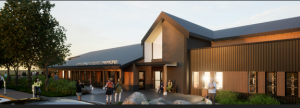Virtual Reality (VR) has transformed the recreational gaming industry into a totally immersive experience. The technology is beginning to do the same for construction by achieving several of the industry’s objectives well and meeting challenges that were difficult to address in the past.
It all links to BIM (Building Information Modeling). Much has been written about BIM’s ability to create vivid and highly accurate 3D imagery. This is becoming vital for all aspects of a project, from conception through to design and execution.
In a 2018 review published in the International Journal of Environmental Research and Public Health (IJERPH), the authors describe how, “Visualization is one of the most important characteristics of BIM. Users can access BIM data in [an] immersive visualization environment and analyze factors like cost and material type to develop effective building design in real time.”
The authors continue, saying, “BIM-enabled VR allows [the] user to take building design into a 3D virtual environment with all relevant building information, experiencing the BIM model in a virtual environment without the restrictions of peering into 2D drawings, and actually inspecting the design space.”
What is the difference between Virtual Reality (VR) and the already-popular Augmented Reality (AR)?
AR merges digital elements into a real-life environment, enhancing the real world using computer-generated perceptual information in an interactive experience. As an analogy, imagine AR is like watching sharks jump from the surface of your desk. The user wears a head-mounted device that includes a high-resolution micro display that views a seven-inch tablet just below the worker’s line of sight without interfering with their front-facing direct vision.
VR is altogether different — a totally artificial environment created by 3D software. You are swimming with the sharks. This is achieved by wearing full-vision VR goggles used with gaming that eliminate the ambient environment entirely.
VR technology comes into its own due to its ability to simulate realistic 3D project visits without requiring the user to be physically on the site — in fact, the VR visitor can be miles away. This allows clients to experience projects both well prior to construction and as it progresses, empowering them to ask questions, make decisions and collaborate with the design and construction teams promptly.
The advantages are numerous. As AEC Business explains, “Many problems and errors in construction projects stem from poor communication. When collaborating partners can present, explain, and alter the design in a shared space, misunderstandings and errors are less likely to occur.” This is particularly helpful as construction moves towards the increased use of prefabrication, a methodology that make few allowances for late changes.
The other challenge that VR can address relates to job site safety and worker training. Virtual Reality in construction can be used in much the same way as the aviation industry uses flight simulators.
Realistic 3D construction sites can be created. Then, in a manner similar to those experienced in gaming, VR interactions can be applied to equipment training programmes, for example crane operation, by both new and existing workers.
This approach to worker education has several advantages in the construction industry. “Traditional construction training on operational activities is based on a classroom environment, followed by on-site training,” the IJERPH review says. The authors suggest that VR simulation can avoid risks of injury and damage to equipment, plus eliminates the cost of fuels.
Likewise, VR interactions with a 3D worksite developed from a new or upcoming project allows workers to benefit from advanced, site-specific safety orientation and familiarization.
The software and hardware necessary to create these simulated 3D environments is developing quickly, and is becoming more feature-oriented, beyond the comparatively simple demands of the gaming industry. Experts expect that the continued development of VR technology and its integration with BIM will not only enhance the client experience but will also result in further productivity gains for the industry by improving site safety and the quality of worker education.
John Bleasby is a Coldwater, Ont. based freelance writer. Send comments and Inside Innovation column ideas to editor@dailycommercialnews.com.











Recent Comments